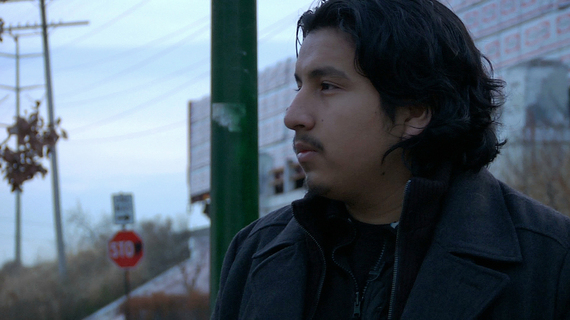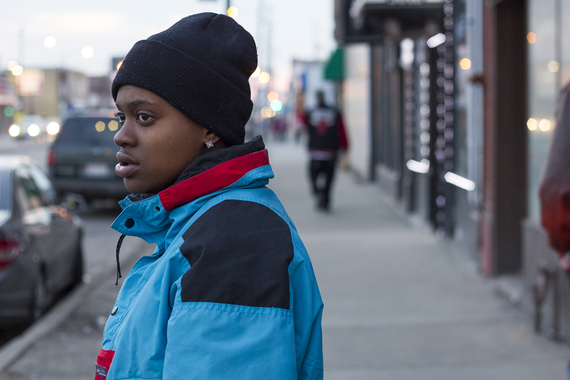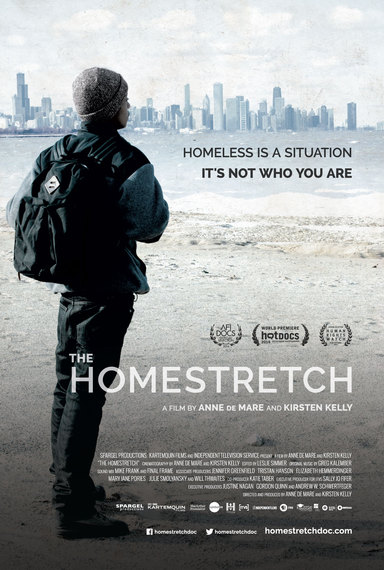November is National Homeless Youth Awareness Month. As a teacher in Chicago Public Schools I am writing to ask readers, and the community of the city of Chicago, for help. Over 22,000 of our students were identified as homeless last year, and it feels like, amidst discussions of testing, contracts, and school closings, no one gave this ever-rising number the attention I believe it deserves.
Each school year, most of my first assignments involve activities designed to assess my students' abilities to read and write, and to gauge what their life experiences have been, thus far. I want to meet them honestly, with integrity and respect. Many of my students reveal details of their life that are common to our communities in Chicago: poverty, single-parent families, issues with self-esteem and relationships. These are important, because I am also looking intently to identify which of my students may be living in what we refer to in Chicago Public Schools, as "Students in Temporary Living Situations" (STLS) or commonly, as students who are homeless.
These students may boldly announce themselves, but more than likely, these students will take a while for myself and my colleagues to find. Sometimes, when I ask about where they do work at home, these students say, "At the library" or "When I'm at my aunt's house." Sometimes, I notice, that despite efforts to alter their appearance, they have been wearing the same clothes all week. Often, I see classmates bringing extra food to share with these students. Once, I noticed a group of young men trading shoes and gym clothes all day, because they only had one pair between them. When I see these things, or a dozen other "tells," I start making a path to allow students to reveal their circumstance to me, or another trusted adult. 
I notice these things, on purpose, because when it was me, no one noticed. In high school, I was also homeless. Out of fear of being placed in any "system" and losing total control of my life, I depended on friends, parents of friends and total strangers for care, advice, and silence about my situation. Sometimes, I was very lucky, most times, I was struggling desperately. My parents weren't and aren't terrible people. They were young and lost in their own lives, which I can now understand. In that time though, I only relied on myself and an unjustified amount of hope.
I did manage to graduate high school, working before and after school, sleeping on couches, under my friends' beds, in our cars, and occasionally, a pretty nice reservoir. I became a teacher, many years after that, out of a great internal desire to share literacy, and the power of a good book to change a life. While I had access to very little in my day-today existence, I lived through literature.
I didn't start out my teaching career with the express interest of searching for students without a stable home. I just couldn't help noticing my own experiences and challenges, in my students. When I would hear a teacher talking about a student with behavior issues, I couldn't stop myself from wondering if that child was hungry. When a student never had paper, I remembered not understanding how other kids got school supplies or lunch every day, when I was in school. When I saw a kid try to steal another kids backpack, or wallet, I had to remember facing those same, very embarrassing decisions, and daily.
As is best practice, I teach empathy and ethics in my classes, via literature, every day. With experience, I began teasing out these most difficult realities more explicitly, and in no time, I started to see an overwhelming number of students come forward. They came forward to discuss their own living conditions and to elicit help for one another. This is when I became familiar with the STLS Program in CPS. This program is run, inconsistently, in every public school across Chicago. Students who are identified as homeless are provided waivers for school fees, access to free transportation to and from school, and depending on the school, a variety of resources. It helps, but is not enough. STLS Liaisons do their best, like teachers, often using their own funds to pay for clothing, school supplies, diapers and formula for student's children or siblings, and so on. Their work, by nature, is a well-kept secret across the city.
Two documentary filmmakers, Anne de Mare and Kirsten Kelly, have spent five years and countless hours of their lives working to capture this reality in their new film, The Homestretch, which I am proud to have participated in. As they followed young, homeless people around the city and through their lives, their subjects share a very complex reality about their Chicago. The film unfolds this truth with integrity and kindness. I urge Chicagoans, and people across our country to take a rare glimpse into the hearts of our most challenged young population. Whether people want to acknowledge this population or not, they exist in every school and community.
While I don't like the fact that we have so many students living under such immense strain, I assure you their commitment to the future, which will impact us all, is nothing short of amazing. Every day, in every classroom, I feel good about the future, if it is in the hands of the thoughtful and engaging young people that sit around me. Their compassion and care for one another goes far beyond that of most adults I encounter. 
Chicago, I don't think you want to ignore these young people. I believe that if you understood the depth and weight of this problem, you would have to care and feel motivated to do something. Maybe you already are. Then, I thank you. Around the city, 24/7, organizations like Chicago Coalition for the Homeless, The Night Ministry, The Crib, Teen Living Programs and National Runaway Safeline... to name a few, do their best to care for these children. Reach out and support their work. For information on resources, The Homestretch trailer and screenings, see here. The film debuts on iTunes on Nov. 25th.
Everyone has a school in their neighborhood; ask them what they need to better support STLS students. Tell others. Ask for their help. This school year, I would love to say, was the year Chicago got behind its homeless students and the organizations that support them. I want to look students in the face, and say, "We got you, you are not alone in this fight."
